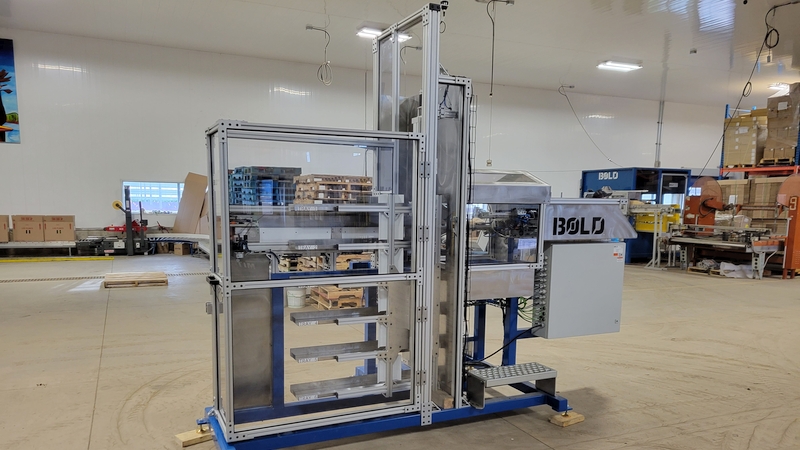Ways to Develop an Effective Sales and Operations Planning Process for Your Greenhouse
In the dynamic world of large-scale greenhouse growing, Sales and Operations Planning (S&OP) can and should be a strategic cornerstone for success. S&OP is a collaborative management process designed to align sales, marketing, production, procurement, logistics, and finance functions within an organization. It helps integrate the collective benefits of exceptional customer service, lean inventory management, cost-efficient production, agile crisis response, and collaborative efficiency within the framework to drive overall corporate success and align with corporate SMART – Specific, Measurable, Achievable, Relevant, and Time-Bound goals.
There are five key strategic goals for a modern S&OP:
- Customer-Centric Operations: Enhance customer satisfaction through precise product delivery by optimizing S&OP processes. Align production plans and supply chains with customer demand, fostering loyalty in the competitive market.
- Lean Inventory Management: Achieve high inventory turnover for improved cash flow. Utilize S&OP to minimize holding time, eliminate stock-outs, and optimize overall inventory efficiency.
- Cost-Efficient Production: Improve profitability through efficient production by aligning S&OP with market demand. Ensure resource utilization is optimized through agile and demand-driven production plans.
- Agile Crisis Response: Safeguard profitability through proactive crisis response. Integrate scenario planning within S&OP to swiftly address supply chain disruptions and ensure continuous business operations.
- Collaborative Efficiency: Streamline operations for increased profitability. Leverage S&OP to foster cross-departmental collaboration, reduce waste, and optimize costs, ensuring efficient and cohesive business processes.
By making these goals the cornerstone of S&OP, large-scale greenhouse growers can strategically position themselves for success in the competitive horticulture industry.
As the Senior Manager of ERP and Analytics at Metrolina Greenhouses, a leading player in the horticulture industry, I am excited to explore the intricacies of S&OP and demonstrate how this process can significantly benefit growers. This article aims to shed light on key performance indicators (KPIs), industry best practices, and the pivotal role of S&OP in optimizing operational efficiency. Additionally, we’ll emphasize the crucial contribution of ERP systems and business intelligence tools in enhancing decision-making capabilities for large-scale growers.
Key Components of S&OP and Their Role for Big Growers
- Demand Planning: Forecasting customer demand based on historical data, market trends, and customer buying behavior.
- Sales Planning: Aligning sales strategies with anticipated demand and market conditions to drive revenue.
- Production Planning: Creating production schedules that optimize capacity, resource utilization, and meet forecasted demand.
- Inventory Planning: Optimizing inventory levels to prevent stockouts or overstock situations and ensure a balanced supply chain.
- Financial Planning: Evaluating the financial impact of S&OP decisions, ensuring alignment with organizational goals.
- Cross-Functional Collaboration: Facilitating communication and collaboration among different departments for a cohesive and well-coordinated plan.
Sales and Operations Planning in Action
The S&OP journey transcends mere meetings, commencing with meticulous data collection and concluding when the orchestrated plan is seamlessly executed. Intrigued by the seamless integration of sales and operations planning? Delve into the intricacies of the six-step S&OP process.
- Data Gathering and Management (Forecasting): Each team diligently compiles data for the specified time frame, encompassing past sales, trend analyses, and plan success rates. The data undergoes formatting into forecasts by the demand planner, with key departments such as sales, marketing, operations/supply, logistics, and finance actively participating. An ideal scenario involves software solutions that continuously compiles this information – ERP, BI Solutions, EDI Integrations.
- Demand Planning: Following validation of forecasts for variability, adjustments are made, and a demand plan is constructed. Managed by the demand planner, input from sales and marketing is essential in finalizing the plan before the pivotal S&OP meeting.
- Production and Supply Planning: Leveraging the demand plan, the head of supply collaborates with operations to craft a comprehensive supply plan. This plan encompasses inventory targets, safety stock, production methods, potential capacity liabilities – space and labor, inventory scheduling, and any necessary pre-launch logistical adjustments.
- Pre-S&OP Meeting (Plan Reconciliation): The supply and demand plans undergo reconciliation, with adjustments made based on their realistic accommodation of each other. The finance department plays a pivotal role in this stage, ensuring that all plans align with a pre-established budget. If substantial cost-related challenges arise, this juncture becomes critical for assessing the financial feasibility of proceeding with the plan.
- Executive S&OP Meeting: With all details meticulously finalized, the plans take center stage at the executive S&OP meeting, where key managers and leaders meet to review key data and plans for decisions. The goal is to conclude the meeting with a well-defined, agreeable plan poised for implementation across the entire organization.
- Implementation: After the executive meeting, each departmental leader collaborates with their team and cross-functionally to enact the changes outlined in the plan. Regular evaluations of the implementation process are recommended to ensure alignment with strategic objectives and make any necessary adjustments.
In today’s dynamic horticulture landscape, an effective Sales and Operations Planning (S&OP) process, underpinned by advanced technology, emerges as a cornerstone for sustained growth. This framework not only caters to the needs of large-scale growers but also holds significant promise for small to medium-scale operations seeking to streamline their processes and scale efficiently.
For small to medium-scale growers, investing in technology is particularly pivotal as it provides a pathway to scalability and enhanced organizational structure. By embracing ERP systems, integrating business intelligence tools, and leveraging EDI integrations, growers can harness the power of real-time data insights and analytics, facilitating agile decision-making and fostering operational excellence.
As the horticulture industry continues to evolve, adopting S&OP best practices and focusing on key performance indicators are imperative steps toward achieving operational optimization and navigating market complexities. With the right tools and strategies in place, growers of all sizes can position themselves for long-term success and resilience in the competitive greenhouse growing arena.
For more information, including 17 key performance indicators to consider, you can read my original article at AdvancedGrowerSolutions.com.









